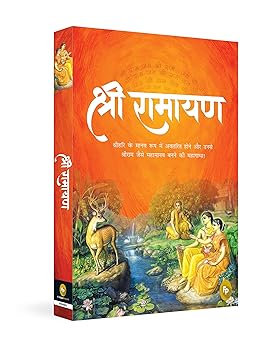લાવો કંકુડીયાને ચોખલિયા પિલાવો રે,
એ રે ચોખલિયા આરાસુર મોકલાવો રે,
આરાસુર થી અંબે માં વહેલા આવો રે,
નહીરે આવો તો માંડી જશે તમારી લાજ રે
લાવો કંકુડીયાને ચોખલિયા પિલાવો રે,
એ રે ચોખલિયા રાજપરા મોકલાવો રે,
રાજપરા થી ખોડીયાર માં વહેલા આવો રે,
નહીરે આવો તો માંડી જશે તમારી લાજ રે
લાવો કંકુડીયાને ચોખલિયા પિલાવો રે.
એ રે ચોખલિયા પાવાગઢ મોકલાવો રે
પાવાગઢ થી મહાકાળી માં વહેલા આવો રે,
નહીરે આવો તો માંડી જશે તમારી લાજ રે
Overview of "Lavo Kankudiya Ne Chokhliya Pilavo Re"
Title & Meaning
'Lavo Kankudiya Ne Chokhliya Pilavo Re' is a lively Gujarati Garba song celebrated during Navratri, depicting devotion and traditional festivities.
Artist & Recording Details
Performed by various folk artists across Gujarat; both live Garba performances and studio recordings exist.
Genre & Occasion
Gujarati folk Garba song typically performed during Navratri and festive community celebrations honoring Goddess Amba.
Language & Dialect
Lyrics are in Gujarati with regional dialects and expressions, reflecting cultural nuances and festive traditions.
Popularity & Versions
Popular among both rural and urban communities; multiple live and recorded versions are enjoyed during Garba nights.
Lyrics Structure & Themes
Devotional Invocation
Lyrics begin with devotion, invoking Goddess Amba's blessings and protection for devotees participating in the Garba.
Repetitive Chorus
Chorus lines are repeated to enhance rhythm, participation, and the dance experience during Navratri.
Imagery & Symbolism
Lyrics use colorful imagery and symbolism representing festivity, cultural rituals, and devotion to Goddess Amba.
Community & Togetherness
Highlights unity and collective celebration, emphasizing togetherness in Navratri Garba gatherings.
Emotional Resonance
Lyrics evoke joy, devotion, and energy, uplifting participants and enhancing the festive mood.
Musical & Performance Elements
Instrumentation & Rhythm
Traditional instruments like dhol, dholak, and claps provide lively rhythm for Garba dancers.
Tempo & Dynamics
The song starts with a moderate tempo and builds energy gradually to keep dancers engaged throughout the night.
Live vs Studio Renditions
Live performances feature crowd interaction and extended verses; studio versions are shorter and polished for broader audiences.
Dance Cues & Movements
Lyrics provide guidance for claps, spins, and footwork in circular Garba formations, synchronizing movement with rhythm.
Audience Participation
Encourages devotees to sing and dance together, fostering inclusivity and communal enjoyment during Garba.
Festival & Cultural Significance
Navratri Connection
A key Garba song during Navratri, enhancing devotional energy and festive excitement among participants.
Spiritual Meaning
Reflects devotion, surrender, and faith in Goddess Amba, invoking her blessings for prosperity and protection.
Cultural Heritage
Preserves Gujarati folk traditions and ensures continuity of musical and dance heritage across generations.
Community Bonding
Brings communities together through shared singing, dancing, and devotional celebrations.
Joyful Celebration
Generates happiness, pride, and spiritual enthusiasm, enriching the overall festive experience.
How to Use & Share
Translations & Transliteration
Providing translations allows non-Gujarati devotees to understand and connect with the meaning of the Garba song.
Audio / Video Embeds
Embed live Garba videos and audio tracks to create an immersive experience for users.
Printable Lyrics & PDFs
Provide printable PDF versions of the lyrics for personal, educational, or community use.
Performance & Dance Tips
Offer guidance on Garba dance steps, costume ideas, and performance tips for participants.
SEO & Social Media
Optimize content with keywords like Gujarati Garba, Lavo Kankudiya Ne Chokhliya Pilavo Re, Navratri Garba; include social sharing features for visibility.
'Lavo Kankudiya Ne Chokhliya Pilavo Re' is a lively Gujarati Garba song celebrated during Navratri, depicting devotion and traditional festivities.
Performed by various folk artists across Gujarat; both live Garba performances and studio recordings exist.
Gujarati folk Garba song typically performed during Navratri and festive community celebrations honoring Goddess Amba.
Lyrics are in Gujarati with regional dialects and expressions, reflecting cultural nuances and festive traditions.
Popular among both rural and urban communities; multiple live and recorded versions are enjoyed during Garba nights.
Lyrics begin with devotion, invoking Goddess Amba's blessings and protection for devotees participating in the Garba.
Chorus lines are repeated to enhance rhythm, participation, and the dance experience during Navratri.
Lyrics use colorful imagery and symbolism representing festivity, cultural rituals, and devotion to Goddess Amba.
Highlights unity and collective celebration, emphasizing togetherness in Navratri Garba gatherings.
Lyrics evoke joy, devotion, and energy, uplifting participants and enhancing the festive mood.
Traditional instruments like dhol, dholak, and claps provide lively rhythm for Garba dancers.
The song starts with a moderate tempo and builds energy gradually to keep dancers engaged throughout the night.
Live performances feature crowd interaction and extended verses; studio versions are shorter and polished for broader audiences.
Lyrics provide guidance for claps, spins, and footwork in circular Garba formations, synchronizing movement with rhythm.
Encourages devotees to sing and dance together, fostering inclusivity and communal enjoyment during Garba.
A key Garba song during Navratri, enhancing devotional energy and festive excitement among participants.
Reflects devotion, surrender, and faith in Goddess Amba, invoking her blessings for prosperity and protection.
Preserves Gujarati folk traditions and ensures continuity of musical and dance heritage across generations.
Brings communities together through shared singing, dancing, and devotional celebrations.
Generates happiness, pride, and spiritual enthusiasm, enriching the overall festive experience.
Providing translations allows non-Gujarati devotees to understand and connect with the meaning of the Garba song.
Embed live Garba videos and audio tracks to create an immersive experience for users.
Provide printable PDF versions of the lyrics for personal, educational, or community use.
Offer guidance on Garba dance steps, costume ideas, and performance tips for participants.
Optimize content with keywords like Gujarati Garba, Lavo Kankudiya Ne Chokhliya Pilavo Re, Navratri Garba; include social sharing features for visibility.


